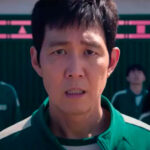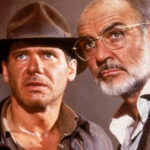

In 2000, “X-Men” hit theaters not only bringing superheroes but also a revolution in the comic book movie genre. Directed by Bryan Singer, the film not only introduced Marvel’s mutants to a global audience but also ushered in a new era of comic book adaptations on screen. With a stellar cast including Hugh Jackman as Wolverine and Patrick Stewart as Professor X, “X-Men” explored themes of discrimination and acceptance through characters endowed with extraordinary abilities. Its performances and pioneering visual effects set a milestone that shaped the future of superhero cinema.
Let’s explore 12 trivia facts about this classic superhero film:
1 – KEVIN FEIGE WAS THE MUTANT CONSULTANT!
Okay, we know, this may be the most well-known trivia on the list, but we left it out of the first list so we had to include it here, especially now that the X-Men have returned to Marvel Studios after 8 years away from home.
Kevin Feige, the guy who today is responsible not only for Marvel Studios but for the entire Marvel Universe itself – be it comics, movies, series, games, and merchandising – was the comic book consultant on this film. He was the expert on mutants on set.
Feige not only mapped out plans for the franchise, but he even fought to have Wolverine sport that hairstyle similar to the comics. He also fought to have the uniforms, but he didn’t win that battle. In other words, Fox missed the chance to have a shared universe even before Disney came into the picture.
2 – X EVERYWHERE!
This one is almost hard to notice, but despite being “noticed” in 2014 with the trailer for X-Men: Days of Future Past, FOX had already played with the franchise’s X in the first film.
During the opening of the movie with the presentation of the late 20th Century Fox Studios logo, the “X” from Fox took a little longer to disappear, staying illuminated in the dark.
It’s also interesting to note that the X present in the cerebro door, representing Professor X, appears a little before the X “created” by Magneto in the concentration camps, when he first manifested his powers.
3 – ROGUE’S JOURNEY!
Anna Marie, even before discovering herself as Rogue, planned a long trip with her boyfriend to the Canadian Falls moments before her powers emerged and put him in a coma.
However, this did not stop her from continuing the journey. Rogue runs away from home and occasionally meets Logan precisely because she had started her trip. So, it was destiny for them to meet.
4 – GEORGE BUZA, THE ORIGINAL BEAST VOICE ACTOR!
This easter egg is more international. George Buza, the original voice behind Beast in X-Men: The Animated Series, made a cameo in X-Men 1 as one of the characters who “help” Rogue during her journey. He’s the guy who initially gives Rogue a ride to the town where Wolverine later crosses paths with her. Not only that, but George was also present – albeit sleeping – in the bar scene where Wolverine gets exposed as a mutant.
5 – THE CAMERA GAME BETWEEN CHARLES AND ERIK
Bryan Singer as a director stands out for many qualities. Like M. Night Shyamalan, Singer values scenes and dialogue takes that involve intimate camera positioning to enhance immersion.
In the first X-Men film, between Charles and Erik’s initial scene, there’s an “invisible” line that separates the camera angles between the two characters. Moreover, while Charles is portrayed with a well-lit camera setup, Erik’s is dark and shadowy.
This contrast serves to highlight the characters’ differing ideologies. Both are entirely justified in their perspectives, but each envisions a different future, hence the visual contrast between them.
6 – JEAN GREY, A DOCTOR AND DIPLOMAT
In X-Men 1, many well-known mutants were not immediately introduced due to budget constraints. One of them is Beast, a mutant geneticist and diplomat known for his blue fur and bestial form.
Since Beast couldn’t be included in the film as the “Dr.” of the X-Men due to budget limitations, that title was given to Jean Grey. She not only assumed Hank’s diplomatic role but also earned the title of “doctor” as a mutant physician.
Interestingly, this role alignment was later attributed to Jean Grey in the animated series X-Men: Evolution, where she exhibited several of Beast’s diplomatic traits. She later mentioned to the Professor her desire to pursue a career in medicine, specializing in genetics.
7 – SENATOR KELLY’S PREDICTIONS
During his monologue against Jean Grey early in the film, Senator Kelly mentions the file of mutant Kate Pryde, who has the ability to become intangible and pass through objects. He also questions Jean, asking what would stop her from entering the White House and assassinating the president. Well, #KellyWasRight, because that’s exactly what happens at the beginning of the second film.
However, it’s not Kitty who does it, but Nightcrawler, who under the control of General Stryker, invades the White House and attempts to assassinate the American president.
8 – HUGH JACKMAN LEARNED WOLVERINE’S INSTINCTS
To embody Wolverine, Hugh Jackman spent hours each day preparing his body and maintaining his character’s physique. But Jackman also lived like Logan even during his downtime.
In order to maintain Wolverine’s instincts, Jackman took cold showers whenever possible to keep himself alert. It’s “funny” considering that much of the filming locations for the first film were in cold regions.
Later, during the production of LOGAN, he revealed that he maintained this “ritual” throughout all the films in which he portrayed Wolverine. He would wake up, take a cold shower, and then put on the Wolverine persona. That’s dedication!
9 – PROFESSOR X TEACHING ABOUT LIGHT REFRACTION
During the beginning of the film, when Logan arrives at the Institute, he interrupts one of Professor Xavier’s classes. If you look closely at the chalkboard, the lesson being taught was about light refraction.
Later, during the film’s third act, Magneto mocks Cyclops for trying to encourage Storm to electrocute him while they are inside a large hall made of copper, a good conductor of electricity. He questions if they even study while living in an educational institute. Shortly after, Jean, using her telekinesis, simulates light refraction by redirecting the concussive energy fired by Cyclops at Magneto. Once again, education prevails.
10 – STORM’S ACCENT
Continuing on the topic of representation, throughout X-Men 1, Halle Berry, who played Storm, an American mutant who spent her childhood in Kenya and Egypt, emphasized a Kenyan accent in her dialogue.
However, despite the film receiving excellent positive reviews, one of the criticisms highlighted the “poor” accent the character had, which some found even offensive. As a result, in subsequent films, the accent was completely eradicated from the character.
In addition to the accent, Halle’s portrayal of Ororo also included clothing inspired by East Africa, but these too disappeared from her wardrobe in the following films.
11 – THE INVASION OF THE X-MANSION IN X-MEN 2
In the final minutes of X-Men 1, we see Xavier and Erik playing a game of chess while discussing a monologue about Xavier not fearing the invasion of the Institute.
Xavier, being a complete pacifist, claims that this is one of his greatest fears, but in reality, he pities the poor soul who would invade a school full of students with powerful and dangerous abilities and no experience.
This sets up a key plot point in X-Men 2, where Stryker decides to invade the Xavier Institute to capture mutants for study and to steal Cerebro.
12 – THE CHESS GAME
A chess expert who enjoys analyzing different moves in various films dissected the scene where Charles and Erik play chess.
He noticed that while Erik valued his most important pieces and sacrificed the weak ones, Charles sacrificed his important pieces, even giving away his Queen – the most important piece in the game – to preserve a single Pawn.
This directly reflects two situations: firstly, in X-Men 2, when Xavier loses his “most powerful” student – Jean Grey, and in return, manages to strike a “deal” with the American president to preserve mutant lives.
According to the expert, Xavier’s Pawns could also be seen as humans, where the Professor evaluates mutual coexistence between humans and mutants, thus understanding the importance of smaller pieces.
As for Magneto, it refers to his classic line in X-Men: The Last Stand, when he says that “In a game of chess, the pawns go first.” The pawn Erik refers to here are weak and foolish mutants that he managed to manipulate, in addition to the humans themselves, whom he so despises.
Since its release in 2000, “X-Men” continues to be celebrated not only as a milestone in superhero movie history but also as an example of how comic book adaptations can be successful. Its cultural and commercial impact helped pave the way for the expanded Marvel and DC film universes that dominate today’s cinema.
With a mix of thrilling action, complex characters, and universal themes of inclusion and prejudice, “X-Men” has not only garnered fans worldwide but also inspired generations of viewers and filmmakers to explore new narrative and visual frontiers.








